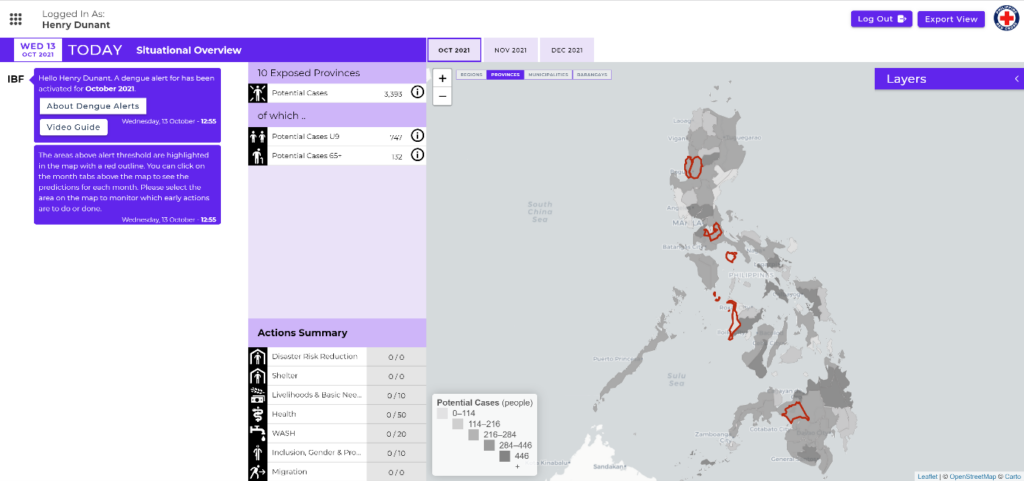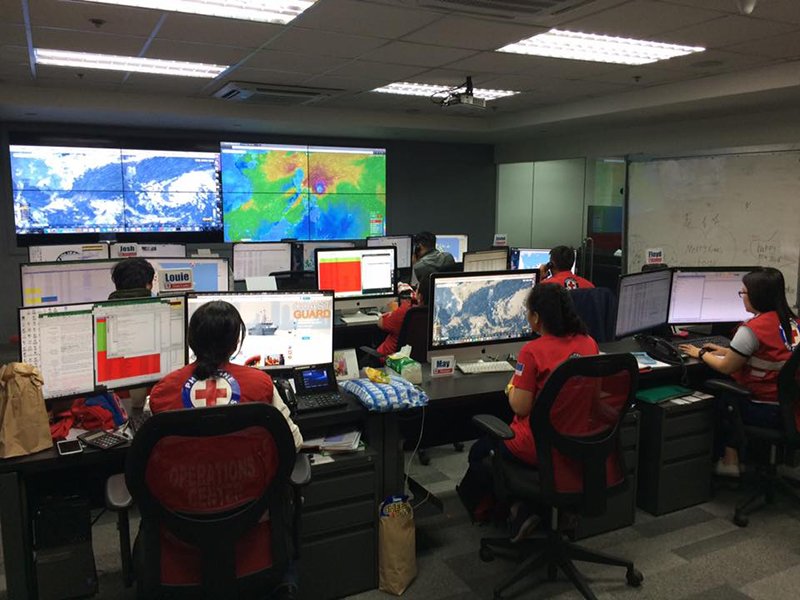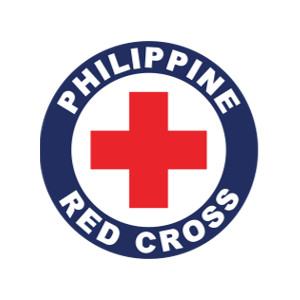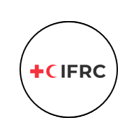في السنوات الخمسين الماضية، انتشر مرض حمى الضنك من تسع دول إلى أكثر من مائة دولة، مما يجعله الأسرع انتشارًا. vector-borne disease. This type of disease is spread by blood-feeding anthropods like mosquitoes. The number of cases has increased from 15,000 per year in the 1960s to 390 million today. Over 40 percent of the world’s population is at risk from dengue. The overall burden of the disease varies from region to region, with Asia-Pacific hosting 75 percent of those at risk. This includes The Philippines, where dengue poses a major issue.
510 developed the Impact Based Forecasting (IBF) Dengue Portal in order to predict which areas are prone to dengue outbreaks and thus mitigate the impact. The IBF Dengue Portal was launched on the 1شارع من شهر يوليو. اقرأ دراسة الحالة هنا.
بوابة IBF لحمى الضنك
تنتقل فيروسات حمى الضنك إلى البشر من خلال لدغة بعوضة مصابة. وتعتبر الظروف البيئية الحارة والرطبة مواتية لتكاثر البعوض. وتُستخدم بيانات الطقس، مثل درجة الحرارة وهطول الأمطار، كمدخلات لبوابة IBF Dengue Portal للتنبؤ بهذه الظروف. وتقدم بوابة IBF تنبؤًا لكل شهر لكل مقاطعة على حدة في الفلبين.
‘The portal is a convenient way to report and gives suggested action. Hospital locations are included in the portal so the PRC can send ambulances to the right locations’, says Ghazal Ayobi, Data Analyst at the Philippine Red Cross.
The portal releases an alert up to 2 months ahead when the risk of dengue outbreak in a specific province and correspondingly the expected number of dengue cases satisfy the alert conditions. ‘Unlike floods and typhoons, Dengue is always present in The Philippines. What we try to do is predict if the number of cases is so high that it forms a problem for the local healthcare system’ says Jacopo Margutti, Data scientist at 510. The alert threshold is reached when the amount of expected cases is higher than usual. The epidemic threshold is reached when the number of cases is extremely high. ‘If we take early actions, we can also reduce the impact of these outbreaks’ Margutti adds.

بوابة IBF لحمى الضنك
الإجراءات المبكرة
The portal allows proactive response that mitigates the impacts brought by infectious disease. ‘The early action plan prepares the organization to allocate the it’s recourses to their respective places’, says Ayobi. Early actions are developed collaboratively with all organizations involved to decide on what anticipatory actions to undertake. The early actions can be divided into three areas of focus: 1. Health, 2. Water Sanitation and Hygiene (WASH), and 3. Protection, Gender and Inclusion (PGI) Examples of Health include: setting up Dengue Emergency Medical Units (DEMU’s), mobilizing Community Health Volunteers (CHV), social media campaigns promoting prevention and control measures. WASH examples include: hygiene promotion on safe usage of water and cleaning of mosquito breeding sites, and garbage disposal. Examples of PGI include ensuring all staff received PGI training, and to distribute PGI guidelines.

مركز عمليات المقر الرئيسي لجمهورية الصين الشعبية في مانيلا
تحقيق التوازن بين تصميم المنتج المتمركز حول الإنسان والتصميم الاستراتيجي
The IBF Dengue Portal was co-designed with Aid Workers from The Philippines Red Cross Using Human Centered Design (HCD) methods. Ayobi elaborates by saying that ‘each country has their own background and culture and therefore different needs. Co-design is really important to consider those needs.’
عند بناء منتج، من المهم أن يركز على المستخدم، وقد يكون من الصعب تحقيق ذلك عندما تعمل على أساس مشروع. والحيلة هي إيجاد التوازن بين المشروع الذي يلبي احتياجات المستخدمين النهائيين المحليين الذين يواجهون كوارث محددة والمشاريع التي تعالج مستخدمين نهائيين عالميين آخرين من ثقافات مختلفة يواجهون أنواعًا عديدة من الكوارث. وتتعامل أورلا كانافان (مصممة المنتجات الاستراتيجية (SPD) في 510) وفريق التصميم مع هذا الخط من خلال الجمع بين أساليب HCD وأساليب SPD لضمان وجود نطاق تصميم فعال للمنتج.
How? Canavan elaborates by saying: “Combining HCD and SPD methods allows us to both learn from the local expertise where they champion their needs whilst informing how to create the best modular design. When we were asked to co design for Dengue with Philippines RC we already had a “IBF Portal block design” that was informed by a data base of general insights into cognitive decision making before disasters informed by multiple co design sessions across many national societies and many disaster types including floods, drought, heavy rain and Typhoons & Damage Assessment. HCD allows us to co design without bias with the Philippines team, then through clustering identify which Dengue specific needs should be added to the general block design and test it”.
Based on the Dengue co design results, the design team quickly created a prototype and tested it with the end users and this together with great ideas from the developer Ruben van der Valk, meant not only was the IBF Dengue Portal set up for success efficiently, but any incremental functionality could also be added back into to the other “IBF Portal block designs” where possible.
المنظمات المعنية
الصليب الأحمر الفلبيني يقرر تنفيذ الإجراءات المبكرة بالتنسيق مع NDRRMC وDoH، وينفذ الإجراءات المبكرة. The Netherlands Red Cross (NLRC) data team 510 قدم الدعم الفني في تطوير بوابة IBF وصياغة هذه الوثيقة. قدم المركز الوطني للعلاقات العمالية الدعم المالي لتطوير بوابة IBF ونسق الدعم الفني من مختلف الشركاء تجاه جمهورية الصين الشعبية. المجلس الوطني للحد من مخاطر الكوارث وإدارتها (NDR-RMC) يقود تنسيق الاستجابة لحالات الطوارئ المتعلقة بحمى الضنك. وزارة الصحة يعلن تنبيهات حمى الضنك وحالات الطوارئ، ويشرف على حملات الوقاية، ويدير النظام الصحي. الصليب الأحمر الألماني (GRC) يدعم حاليًا عملية الموافقة على بروتوكول العمل المبكر (EAP). صندوق الأميرة مارغريت دعم تطوير الأداة ماليًا.
510’s role
The PRC and 510 worked closely together to develop a model that predicts Dengue outbreaks in The Philippines. In addition, the IBF Dengue Portal was developed to give a clear and structured overview of the information. ‘Human Centered Design was used in the development of the software in order for the data to be translated into something useful and useable by The Philippines Red Cross’ Margutti adds.
الخطوات التالية
One of the most important future actions is getting the Early Action Protocol (EAP) approved. The EAP is developed collaboratively with all organizations involved to decide on what anticipatory actions to undertake. In addition, Ayobi adds: ‘We are also planning to give better insight in hospital beds. Right now this is the case for covid but not yet for Dengue. Having this number will enable us to give an estimation of how many people a hospital in each region can still take in.’
ويجري حاليًا تطوير بوابة IBF لحمى الضنك لإثيوبيا حيث سيتم نشرها للتخفيف من تأثير تفشي مرض الملاريا.
إذا كانت جمعيتك الوطنية بحاجة إلى مساعدة في إعداد أداة مماثلة، يرجى الاتصال بـ Stefania Giodini (سجيوديني@redcross.nl) أو جاكوبو مارجوتي (جمارجوتي@redcross.nl)
مصدر الصورة: الصليب الأحمر الفلبيني
إن المعلومات ذات الصلة بالأفراد والمجتمعات المحتاجة يمكن أن تكون مفيدة في تقديم مساعدات إنسانية فعّالة ومخصصة. وتتناول سياسة مسؤولية البيانات الخاصة بنا المعالجة المسؤولة للبيانات فيما يتعلق بالمعايير الأخلاقية والمبادئ في السياق الإنساني، مع وضع العواقب المحتملة في الاعتبار واتخاذ التدابير اللازمة لتجنب تعريض الأفراد أو المجتمعات للخطر. اقرأ المزيد عن سياسة مسؤولية البيانات الخاصة بنا هنا

